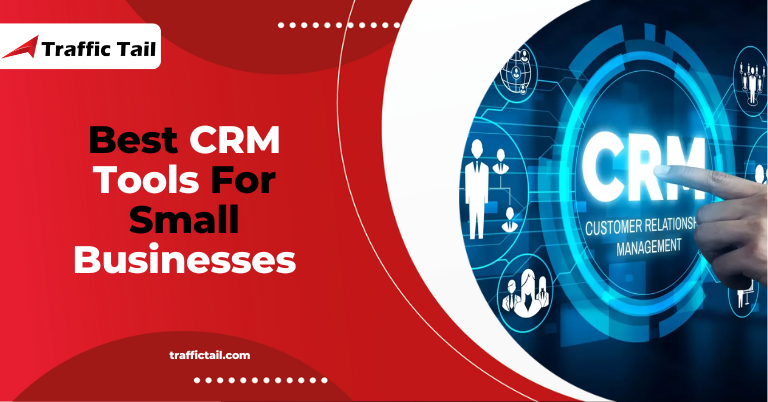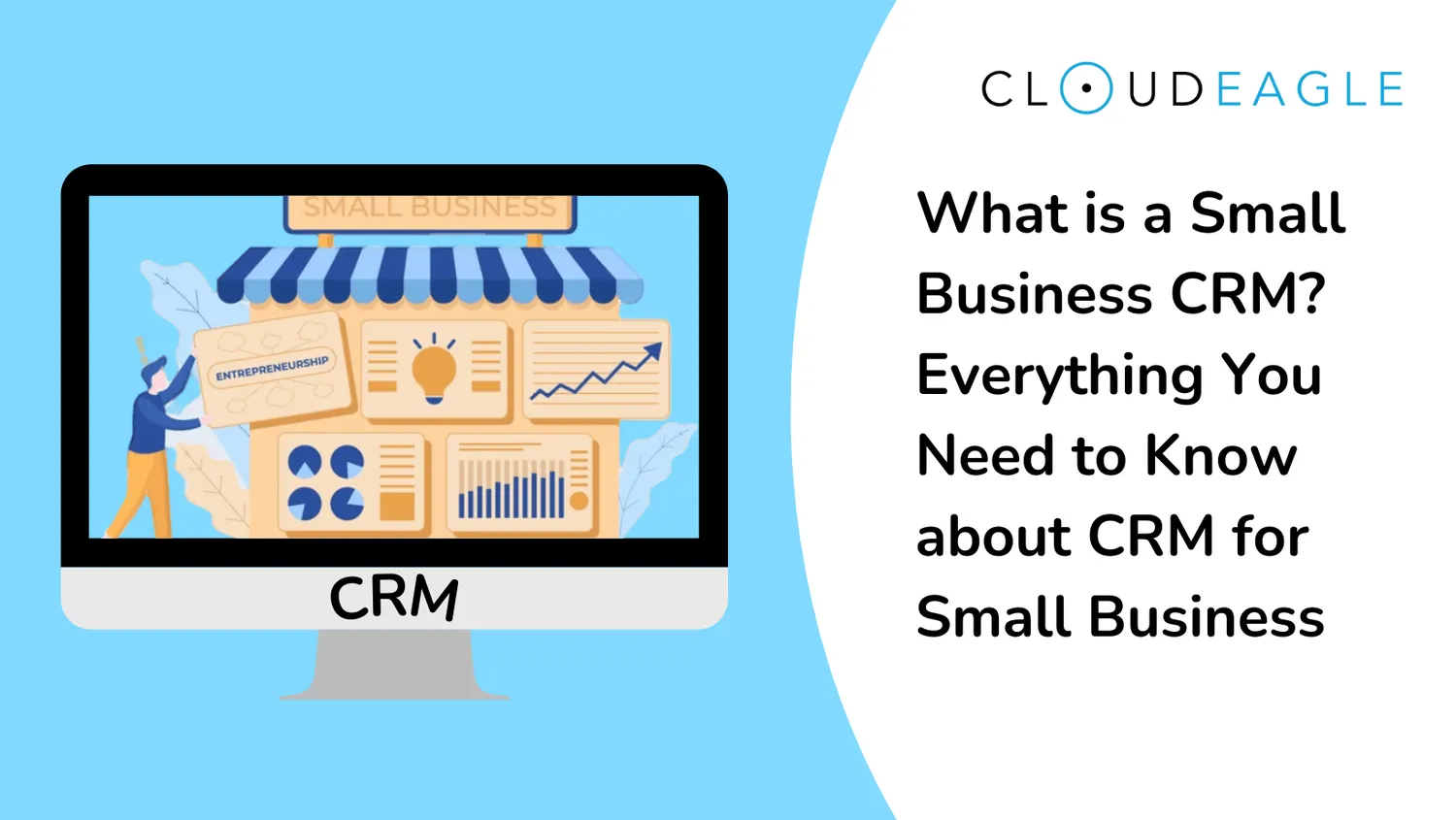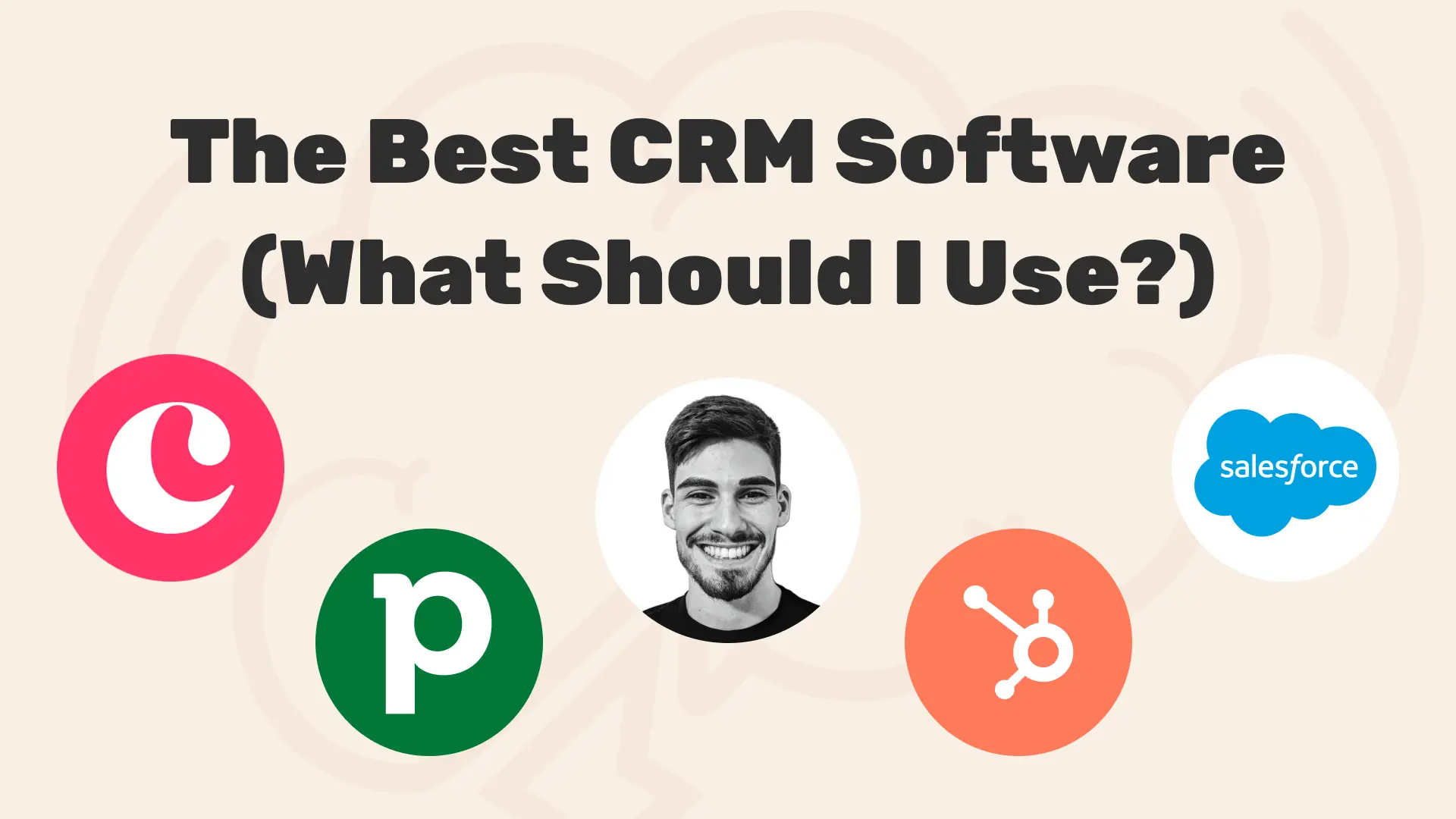
Small Business CRM Checklist: Your Ultimate Guide to Choosing, Implementing, and Maximizing CRM Success
Running a small business is a whirlwind of activity. You’re juggling everything from product development and marketing to customer service and finances. In the midst of this chaos, keeping track of your customers – their needs, preferences, and interactions – can feel like herding cats. That’s where a Customer Relationship Management (CRM) system comes in. A CRM isn’t just a piece of software; it’s a strategic tool that can transform how you connect with, understand, and serve your customers. But with so many options available, choosing the right CRM and making sure it’s implemented effectively can feel overwhelming. That’s why we’ve created this comprehensive small business CRM checklist – your ultimate guide to navigating the CRM landscape and achieving lasting success.
This checklist will walk you through everything, from the initial evaluation phase to the ongoing optimization of your CRM system. We’ll cover the essential features to look for, the key steps in implementation, and the strategies for maximizing your CRM’s impact on your business. Whether you’re a seasoned entrepreneur or just starting out, this checklist will provide you with the clarity and guidance you need to make informed decisions and unlock the full potential of CRM for your small business.
Part 1: Assessing Your Needs and Defining Your Goals
Before you dive into the world of CRM software, it’s crucial to understand your specific needs and objectives. This initial assessment will lay the foundation for a successful CRM implementation. Don’t skip this step! A well-defined plan from the outset will save you time, money, and headaches down the road.
1.1 Define Your Business Goals
What do you hope to achieve with a CRM? Are you looking to:
- Increase sales?
- Improve customer satisfaction?
- Streamline your marketing efforts?
- Enhance customer service?
- Gain a deeper understanding of your customers?
Write down your specific, measurable, achievable, relevant, and time-bound (SMART) goals. For example, instead of saying “increase sales,” aim to “increase sales by 15% in the next quarter.” This specificity will help you evaluate the effectiveness of your CRM later on.
1.2 Identify Your Pain Points
What challenges are you currently facing in managing customer relationships? Are you struggling with:
- Lost leads?
- Inefficient communication?
- Poor customer service?
- Difficulty tracking sales activities?
- Lack of customer insights?
Identifying these pain points will help you prioritize the features you need in a CRM and ensure it addresses your most pressing issues. Document these challenges – they’ll be valuable as you assess potential CRM solutions.
1.3 Analyze Your Current Processes
How do you currently manage customer interactions? Map out your existing processes, including how you:
- Capture leads
- Communicate with customers
- Track sales opportunities
- Handle customer support requests
Understanding your current workflows will help you identify areas for improvement and ensure your CRM seamlessly integrates into your existing operations. Look for redundancies or inefficiencies that a CRM can help eliminate.
1.4 Determine Your Budget
CRM systems range in price, from free options to enterprise-level solutions. Set a realistic budget that includes not only the software cost but also the costs of implementation, training, and ongoing maintenance. Consider the long-term value of the CRM and how it can contribute to your return on investment (ROI).
1.5 Evaluate Your Technical Capabilities
Assess your team’s technical skills and resources. Do you have someone with the expertise to set up and manage a CRM? If not, factor in the cost of training or hiring external consultants. Consider the platform’s ease of use and whether it integrates with your existing software and systems.
Part 2: Researching and Selecting the Right CRM
Now that you have a clear understanding of your needs and goals, it’s time to explore the CRM market and find the solution that’s the perfect fit for your small business. This phase involves careful research, comparison, and evaluation.
2.1 Identify Potential CRM Vendors
Start by researching different CRM vendors. Some popular options for small businesses include:
- HubSpot CRM: A free, user-friendly option with robust features for sales, marketing, and customer service.
- Zoho CRM: A comprehensive and affordable CRM with a wide range of integrations.
- Salesforce Sales Cloud: A powerful, scalable CRM with a wide array of features, though it can be more complex and expensive than other options.
- Pipedrive: A sales-focused CRM that’s known for its simplicity and ease of use.
- Freshsales: A sales CRM with built-in features for phone calls, email, and chat.
Read reviews, compare features, and explore pricing plans to narrow down your options.
2.2 Evaluate Key Features
Based on your needs assessment, identify the essential features you require in a CRM. Consider the following:
- Contact Management: The ability to store and organize customer information, including contact details, communication history, and interactions.
- Sales Automation: Features that automate repetitive sales tasks, such as lead assignment, email follow-ups, and task creation.
- Lead Management: Tools for capturing, nurturing, and qualifying leads, and tracking them through the sales pipeline.
- Sales Pipeline Management: A visual representation of your sales process, allowing you to track deals and identify bottlenecks.
- Reporting and Analytics: Features for generating reports and analyzing data to gain insights into sales performance and customer behavior.
- Marketing Automation: Features that automate marketing tasks, such as email campaigns, social media posting, and lead nurturing.
- Customer Service and Support: Tools for managing customer inquiries, resolving issues, and providing support.
- Integrations: The ability to integrate with other software and systems you use, such as email marketing platforms, accounting software, and social media channels.
- Mobile Access: The ability to access and manage your CRM data on the go.
- Customization: The ability to customize the CRM to meet your specific needs and workflows.
2.3 Consider Scalability
Choose a CRM that can grow with your business. As your company expands, you’ll need a CRM that can handle an increasing volume of data and users, and that offers advanced features as needed. Consider the vendor’s track record and future development plans.
2.4 Assess User-Friendliness
A CRM is only valuable if your team actually uses it. Prioritize user-friendliness and ease of use. Look for a CRM with an intuitive interface, clear navigation, and helpful tutorials. Consider the learning curve and the time it will take your team to get up to speed.
2.5 Evaluate Customer Support
Choose a CRM vendor that offers excellent customer support. Look for options like:
- Comprehensive documentation
- Responsive customer service
- Training resources
- Community forums
Reliable support is crucial for resolving issues and maximizing your CRM’s effectiveness.
2.6 Request Demos and Free Trials
Before making a final decision, request demos and free trials from your top CRM contenders. This is your chance to:
- Test the software
- Explore its features
- See how it aligns with your workflows
- Get a feel for the user interface
Involve your team in the demo process to gather feedback and ensure everyone is comfortable with the chosen CRM.
2.7 Compare Pricing Plans
Carefully compare the pricing plans of different CRM vendors. Consider the features included in each plan, the number of users, and the storage limits. Look for a plan that offers the best value for your money and aligns with your budget. Be sure to understand all associated costs, including implementation fees, training costs, and ongoing maintenance fees.
2.8 Make Your Final Decision
Based on your research, evaluation, and testing, make your final decision. Choose the CRM that best meets your needs, fits your budget, and offers the features and support you require. Don’t rush this process – taking the time to make an informed decision will pay off in the long run.
Part 3: Implementing Your CRM System
Once you’ve chosen your CRM, the real work begins: implementation. This phase involves setting up the software, migrating your data, training your team, and integrating the CRM into your daily operations. A well-executed implementation is critical for maximizing the value of your CRM investment.
3.1 Plan Your Implementation
Develop a detailed implementation plan that outlines the steps involved, the timelines, and the responsibilities. This plan should include:
- Data Migration: How you’ll transfer your existing customer data into the CRM.
- Customization: How you’ll configure the CRM to meet your specific needs.
- Training: How you’ll train your team on how to use the CRM.
- Testing: How you’ll test the CRM to ensure it’s working properly.
- Go-Live Date: The date you’ll launch the CRM.
Assign clear roles and responsibilities to ensure accountability and a smooth implementation process. Set realistic timelines and milestones to track your progress.
3.2 Data Migration
Data migration is a critical step in the implementation process. Carefully plan how you’ll transfer your existing customer data into the CRM. This may involve:
- Cleaning and Organizing Your Data: Remove duplicates, correct errors, and standardize your data format.
- Choosing a Data Migration Method: Decide whether to manually enter data, import data from a spreadsheet, or use a data migration tool.
- Mapping Your Data Fields: Map your existing data fields to the corresponding fields in the CRM.
- Testing Your Data Migration: Test the data migration process to ensure all your data is transferred accurately.
Data migration can be time-consuming, so allocate sufficient time and resources to this task. Accurate data is essential for the CRM to be effective.
3.3 Customization and Configuration
Customize the CRM to meet your specific business needs. This may involve:
- Configuring User Roles and Permissions: Define user roles and permissions to control access to CRM data and features.
- Customizing Fields and Forms: Add custom fields and forms to capture the specific information you need.
- Setting Up Workflows and Automations: Configure workflows and automations to streamline your processes.
- Integrating with Other Systems: Integrate the CRM with other software and systems you use.
Take the time to configure the CRM to match your existing workflows and processes. This will make it easier for your team to use and adopt the CRM.
3.4 Training Your Team
Provide comprehensive training to your team on how to use the CRM. This may involve:
- Creating Training Materials: Develop training materials, such as user manuals, video tutorials, and quick reference guides.
- Conducting Training Sessions: Conduct training sessions, either in-person or online, to walk your team through the CRM’s features and functionality.
- Providing Ongoing Support: Provide ongoing support to your team to answer questions and address any issues they may encounter.
Well-trained users are essential for the success of your CRM implementation. Ensure your team has the knowledge and skills they need to effectively use the CRM.
3.5 Testing and Validation
Thoroughly test the CRM to ensure it’s working properly. Test all features and functionalities, including data entry, reporting, and integrations. Validate the data to ensure it’s accurate and complete. This will help you identify and resolve any issues before the CRM goes live.
3.6 Go-Live and Launch
Once you’ve completed the implementation and testing phases, it’s time to go live with your CRM. Communicate the launch date to your team and provide ongoing support. Monitor the CRM’s performance and make adjustments as needed. Celebrate the launch with your team to build excitement and encourage adoption.
Part 4: Maximizing CRM Success: Ongoing Optimization
Implementing a CRM is just the beginning. To achieve lasting success, you need to continuously optimize your CRM system and processes. This involves monitoring performance, gathering feedback, and making adjustments to improve efficiency and effectiveness.
4.1 Monitor Key Metrics
Track key metrics to measure the performance of your CRM and its impact on your business. These metrics may include:
- Sales Conversion Rates: The percentage of leads that convert into customers.
- Sales Cycle Length: The average time it takes to close a deal.
- Customer Acquisition Cost: The cost of acquiring a new customer.
- Customer Lifetime Value: The predicted revenue a customer will generate over their relationship with your business.
- Customer Satisfaction Scores: Measures of customer satisfaction.
- Lead Generation: The number of leads generated through different channels.
- Sales Team Productivity: Number of calls, emails, and deals closed by your sales team.
Regularly review these metrics to identify areas for improvement and measure the ROI of your CRM investment.
4.2 Gather Feedback from Your Team
Regularly gather feedback from your team on their experience using the CRM. Ask them about:
- Ease of use
- Functionality
- Areas for improvement
- Suggestions for new features
Use this feedback to identify pain points and make adjustments to the CRM to improve its usability and effectiveness. Your team’s input is invaluable for optimizing the CRM.
4.3 Regularly Review and Update Data
Keep your CRM data up-to-date and accurate. Regularly review and update your customer information, contact details, and sales data. This will ensure that your CRM provides accurate insights and helps you make informed decisions. Implement processes to maintain data quality, such as data cleansing and validation.
4.4 Refine Your Processes
Continuously refine your sales, marketing, and customer service processes to maximize the value of your CRM. Identify areas where you can improve efficiency and effectiveness. Automate repetitive tasks and optimize your workflows to save time and resources. Regularly review your processes to ensure they align with your business goals.
4.5 Leverage Integrations
Take advantage of integrations to connect your CRM with other software and systems you use. This will streamline your workflows, eliminate data silos, and provide a more holistic view of your customers. Integrate with email marketing platforms, accounting software, social media channels, and other relevant tools to maximize efficiency.
4.6 Stay Up-to-Date with CRM Best Practices
The CRM landscape is constantly evolving. Stay up-to-date with the latest CRM best practices, trends, and features. Attend webinars, read industry publications, and participate in online forums to learn about new ways to use your CRM and improve its effectiveness. Continuous learning is crucial for maximizing the value of your CRM investment.
4.7 Provide Ongoing Training and Support
Provide ongoing training and support to your team to ensure they are proficient in using the CRM. Offer refresher courses, workshops, and one-on-one coaching. Address any questions or issues promptly. Ongoing training and support are essential for maximizing the adoption and effectiveness of your CRM.
4.8 Celebrate Successes
Recognize and celebrate successes. Acknowledge the achievements of your team and the positive impact of the CRM on your business. Celebrate milestones, such as increased sales, improved customer satisfaction, or streamlined processes. Celebrating successes will boost morale, encourage adoption, and motivate your team to continue using the CRM effectively.
Conclusion
Implementing and optimizing a CRM system is a journey, not a destination. By following this small business CRM checklist, you can set your business up for success in managing customer relationships. Remember that the key is to be proactive, adapt to change, and always strive to improve. By continuously assessing your needs, selecting the right CRM, implementing it effectively, and optimizing its performance, you can unlock the full potential of CRM and drive sustainable growth for your small business. Embrace the power of CRM and transform the way you connect with and serve your customers. Good luck!


